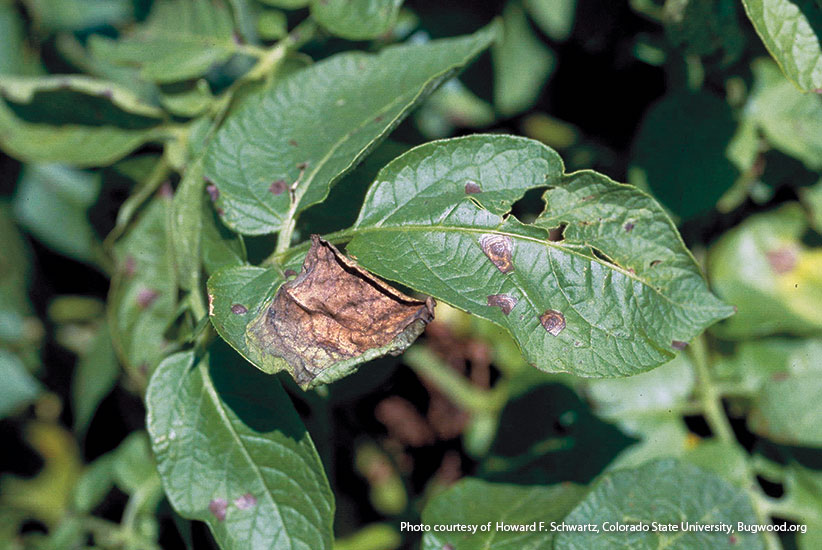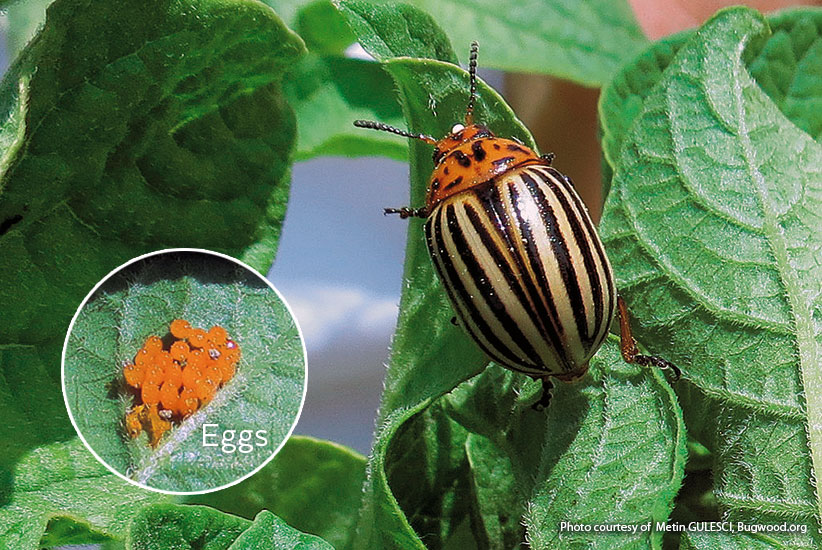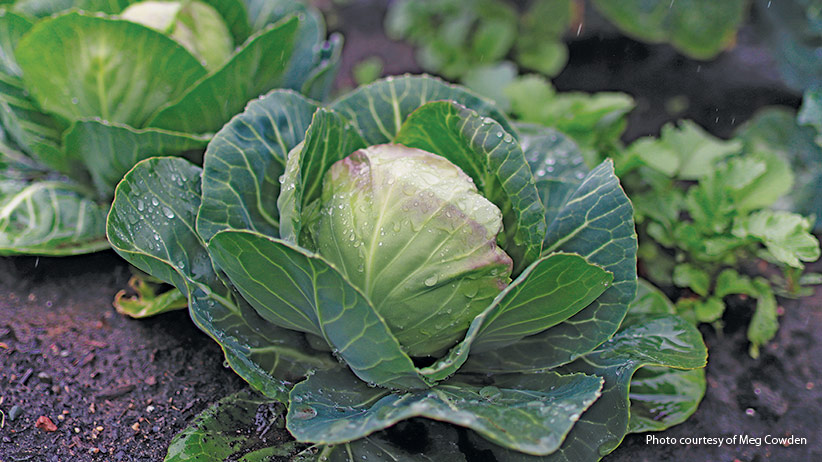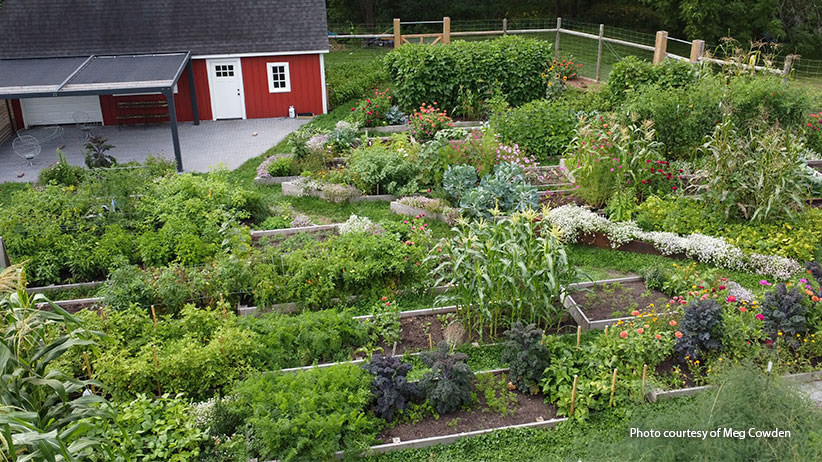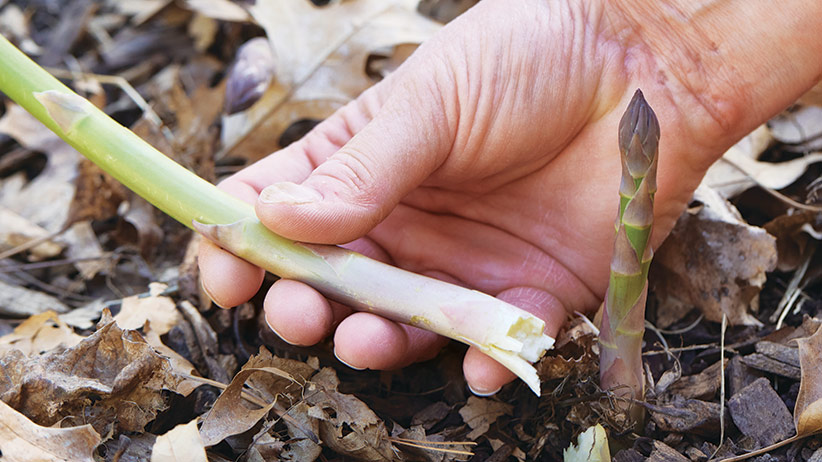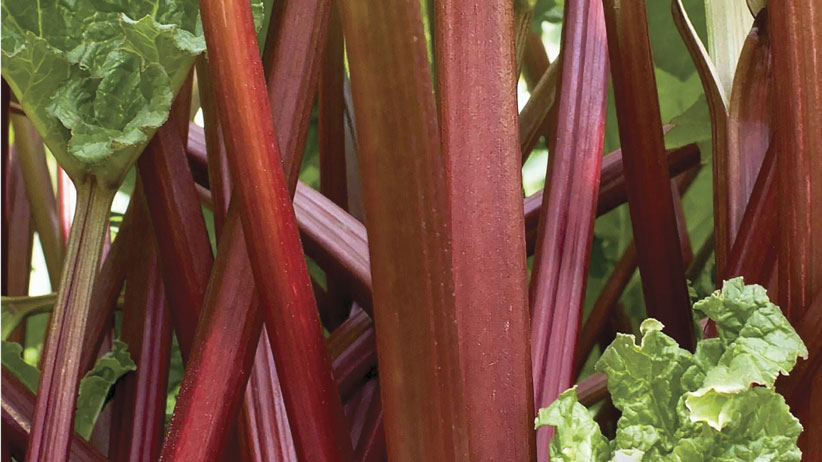You just can't beat the taste of potatoes fresh from your own garden. Here's how to plant potatoes for bountiful harvest this summer.
When to plant potatoes
Seed potatoes are fairly cold-tolerant and can go in the ground in early spring when soil temperatures reach 50 degrees F — about the time dandelions are blooming. But protect any new foliage from late frosts with landscape fabric or an old sheet. Damage caused to the foliage may not kill the plant but could set it back so you don't get as many potatoes as you would have otherwise.
Potatoes do best with full sun and well-drained soil. Don't worry if your soil isn't great, we have a couple of alternative growing techniques for you further down the page.
What to plant
Instead of planting the seed from potato flowers, you'll get easier and quicker results by planting cut-up pieces or small-sized tubers called "seed potatoes". Get certified disease-free seed potatoes from local or online nurseries in early spring. You can also cut up the ones that are sprouting in the pantry.
Which type of potato should I grow?
Sure, you can find a few types of potatoes in the grocery store, but grow your own and the options skyrocket — large, small, long, stubby, red, blue or yellow - there’s a potato for every taste. Local garden centers often have several types, but if you want to experiment, you might explore the offerings of a few of the online sources listed below. Potatoes fall into the six shape and color categories shown in the chart and include dozens of varieties in each one. You’ll find tried-and-true heirlooms that have been around for generations, new varieties with improved taste or disease and pest resistance and everything in between.
Sources for seed potatoes
Potato texture primer
Once you get your potatoes in the kitchen, what it looks like on the outside isn't as important as the interior texture — the mix of starch and water — that tells you how to cook it. Floury potatoes have more starch than water so they’re good for baking; waxy ones have more water than starch and hold up well in salads or during roasting. All-purpose potatoes, as the name implies, are the most versatile and will work for any of your cooking creations. Read the catalog description of each variety to find the potato’s texture.
| Potato type | Description | Best uses | Varieties to try |
|---|---|---|---|
| Russet | These potatoes have a thick skin that’s light to medium brown. The interior is white to yellow with a fluffy texture when cooked. | Baking, mashing and roasting | Gold Rush, Burbank, Pioneer |
| Red | A thin red skin and white interior characterize this group. The firm texture holds up well to cooking. | Soups, salads, roasting and mashing | Norland Red, Strawberry Paw, Adirondack Red |
| White | White potatoes have buff-colored skin with white flesh. They have a waxy, slightly creamy texture and a low sugar content. | Frying, mashing, salads, steaming and boiling | Superior, Kennebec, Elba |
| Yellow | Thin light tan to golden skin with a yellow interior. It's a waxy potato with a creamy, slightly buttery flavor. | Grilling, roasting, mashing and salads | Yukon Gold, Natascha, Yellow Finn |
| Blue / Purple | Some have blue or purple skin and flesh, others have colorful skin with a white interior. Blues and purples have slightly earthy taste and hold on to the pretty color when they’re cooked. | Roasting, grilling or salads | Elmer's Blue, Magic Molly, Purple Majesty |
| Fingerling | There are a variety of colors with fingerlings, but they’re all oblong in shape with a waxy firm texture and a buttery or earthy taste. | Frying, roasting or salads | Cowhorn, Nosebag, Russian Banana, Red Thumb |
You Might Also Like:
Garden Fresh Tricolor Potato Salad Recipe
7 Easy Plants to Grow from Seed
Plant an Edible Landscape Around Your Patio
10 Low-Maintenance Garden Perennials
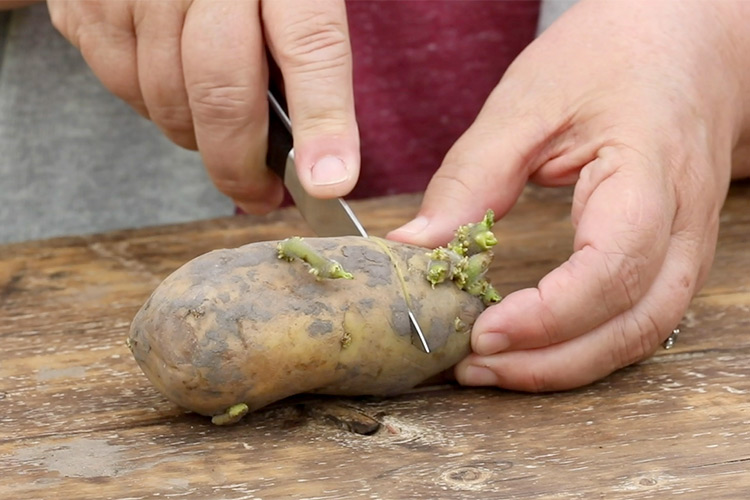
How to prepare seed potatoes for planting
- If your seed potato is golf ball size or smaller you can plant it whole.
- Larger than that and you'll want to cut it into pieces that have 2 or 3 eyes each.
- Let the pieces air-dry, for a day or two to form a callous that helps it resist disease.
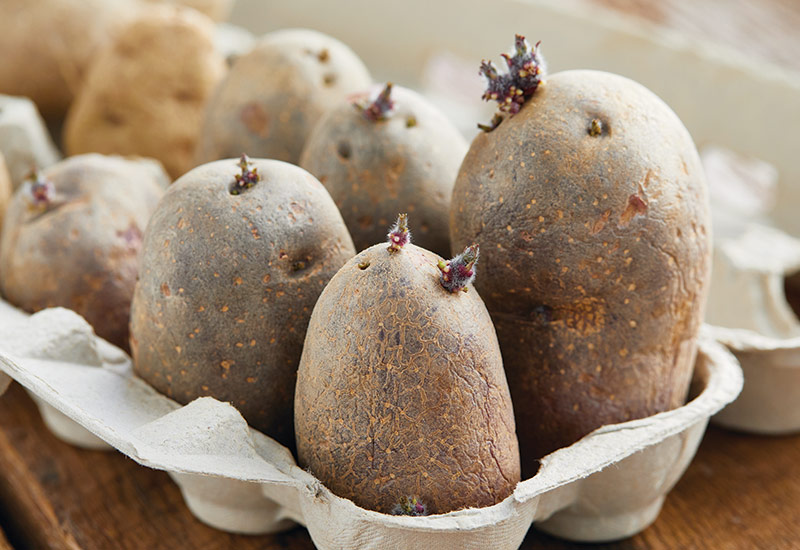
Chitting potatoes
You may want to give presprouting, or “chitting,” a try: It gives potatoes a head start and may increase your harvest. The end of the potato with dimples is the seed end where most of the growth will come from.
With the seed ends up, set potatoes or pieces in a spot that stays around 70 degrees F and gets indirect light. I think the egg carton above is a great way to hold the potatoes up (and also move them to the garden later). Once you see short, stubby sprouts in a week or two, they’re ready to go in the garden. But don’t wait too long—leggy sprouts are fragile and break off easily.
You Might Also Like:
Vegetable Garden with Curb Appeal
5 Great Reasons to Grow Peas
Easy-to-Grow Heirloom Vegetables
The Best Heirloom Tomatoes to Grow in Your Garden

How to plant potatoes with the hilling method
Hilling is a great way to grow potatoes, whether they’re in rows or just a few plants. Take a look at the illustration and how-to steps below.
- Plant the seed potato sprout-side-up in a planting hole 3 to 4 inches deep as you see in the photo above. Press firmly so it makes good contact with the soil. Cover it with 2 inches of compost or soil.
- Keep an eye out and when the stem has grown 6 inches taller cover half of the stem with more soil.
- Repeat step 2 until the "hill" is about 12 inches tall. Drought stress reduces the harvest, so add a 2- to 4-inch layer of organic mulch on top of your hill to conserve moisture.
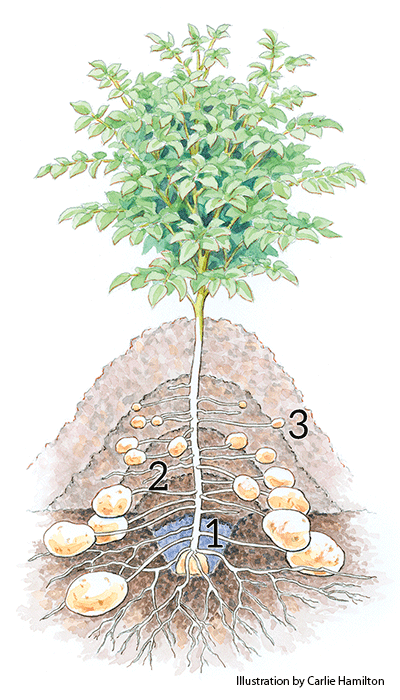
Hilling method tips
- Make sure to water! Drought stress will reduce your yield and the soil in this small hill can dry out quickly. So make sure plants are getting 1 to 2 inches of water a week.
- Feed plants every couple of weeks once you see stems poking through the soil with an organic liquid plant food, such as fish emulsion.
- Avoid high-nitrogen foods that will produce more foliage and few tubers. Stop feeding and watering when the foliage starts to die back in late summer.
- Make sure the potatoes stay covered with soil. Those exposed to the sun will develop toxic green patches. (If they do form, cut them off and eat the rest of the potato.)
Harvesting tips
- 2 weeks after plants bloom, carefully pull some of the soil away from the stem. Snap off enough small potatoes for a meal and push the soil back in place so the rest will be ready later.
- Once frost kills the foliage or it dies back on its own, it’s time to dig. With a spading fork, start near the edge of the hill and work your way toward the main stem. After carefully digging the plant, go back and sift through the soil with your hands to find any potatoes that fell off below ground.
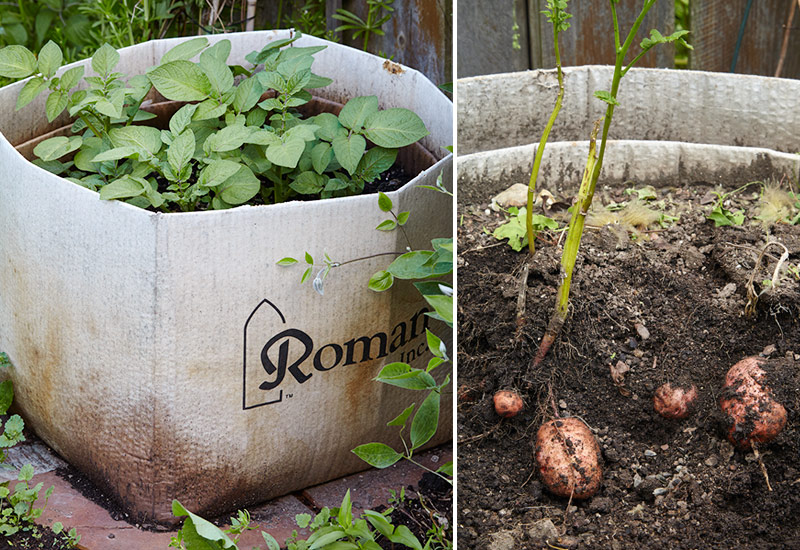
How to plant potatoes in a box or bag
Grow potatoes in a large box filled with compost or potting mix - no hilling needed. Use any packing box at least 18 inches deep with the bottom intact, and fold the top flaps into the box for structural stability. To ensure it didn’t collapse before the season’s end, I used a second box inside the first.
- Prepare seed potatoes for planting: If your seed potato is golf ball size or smaller go ahead and plant it whole. Larger than that and you'll want to cut it into pieces that have 2 or 3 eyes each.
- Fill the box with soil and plant the potatoes 4 to 6 inches deep.
- At the end of the season, just tear or cut the box open, pull out potatoes and compost the rest.
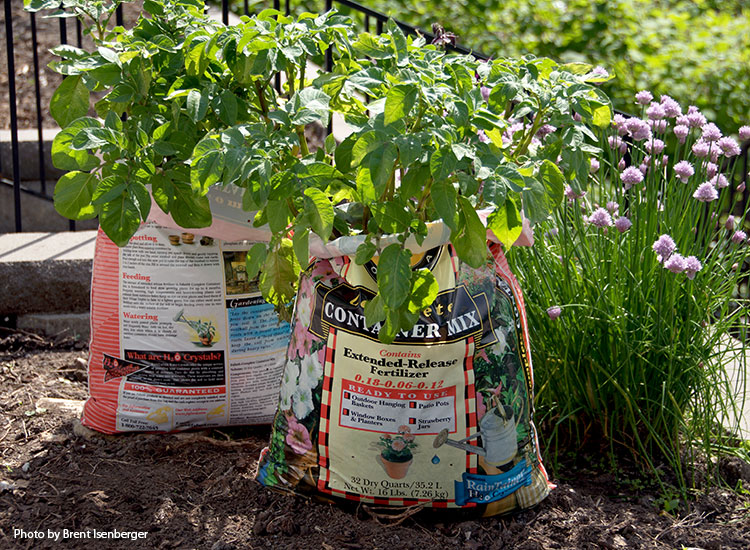
Don't have a box? No problem. Just tear open a bag of potting soil, poke some holes in the bottom for water to drain and plant your potatoes!
Common potato problems
For home gardeners, potatoes are usually pretty worry-free — but the slideshow below will help you with some of the more common problems.




